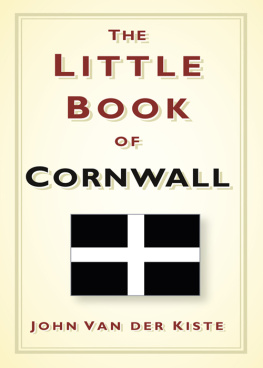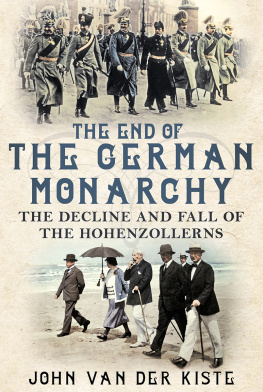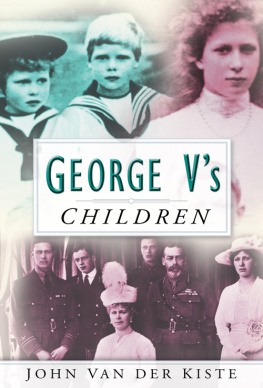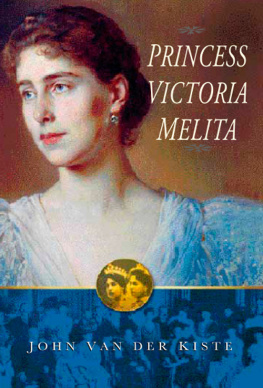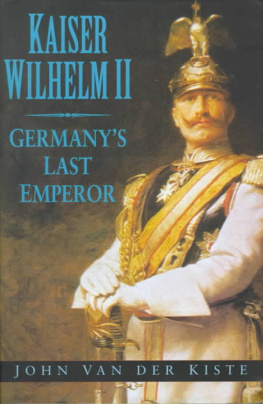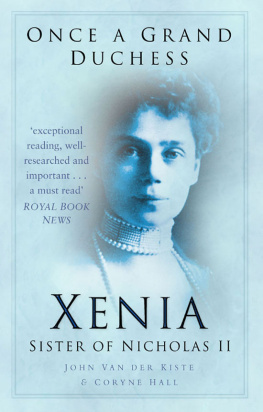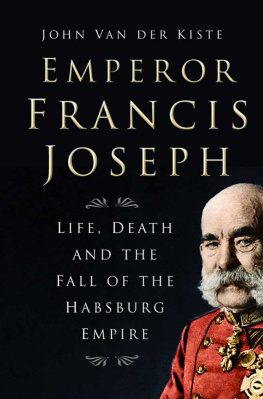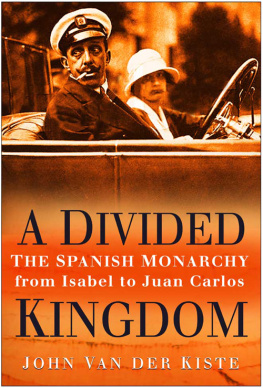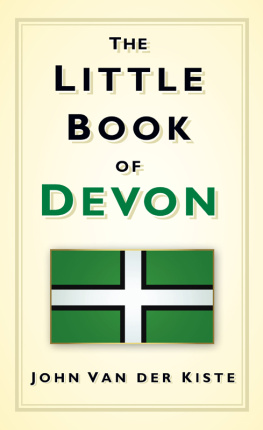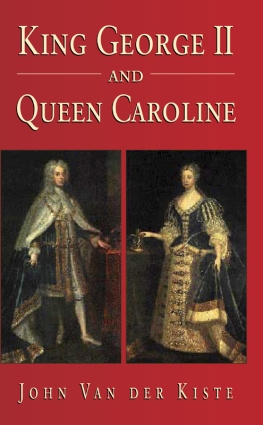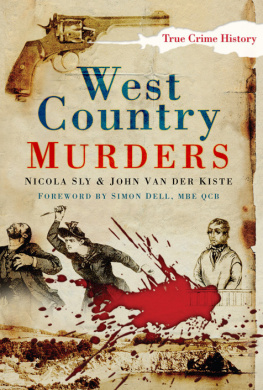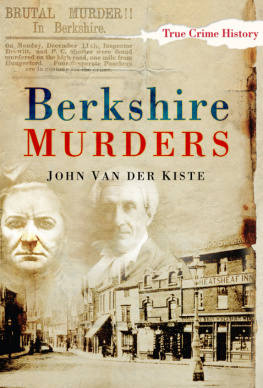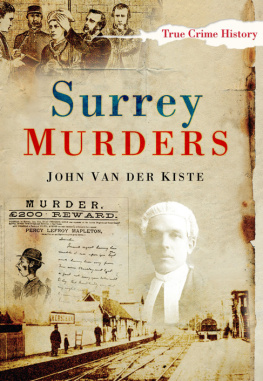John Van der Kiste - The Little Book of Cornwall
Here you can read online John Van der Kiste - The Little Book of Cornwall full text of the book (entire story) in english for free. Download pdf and epub, get meaning, cover and reviews about this ebook. year: 2013, publisher: The History Press, genre: Non-fiction. Description of the work, (preface) as well as reviews are available. Best literature library LitArk.com created for fans of good reading and offers a wide selection of genres:
Romance novel
Science fiction
Adventure
Detective
Science
History
Home and family
Prose
Art
Politics
Computer
Non-fiction
Religion
Business
Children
Humor
Choose a favorite category and find really read worthwhile books. Enjoy immersion in the world of imagination, feel the emotions of the characters or learn something new for yourself, make an fascinating discovery.
- Book:The Little Book of Cornwall
- Author:
- Publisher:The History Press
- Genre:
- Year:2013
- Rating:5 / 5
- Favourites:Add to favourites
- Your mark:
- 100
- 1
- 2
- 3
- 4
- 5
The Little Book of Cornwall: summary, description and annotation
We offer to read an annotation, description, summary or preface (depends on what the author of the book "The Little Book of Cornwall" wrote himself). If you haven't found the necessary information about the book — write in the comments, we will try to find it.
The Little Book of Cornwall — read online for free the complete book (whole text) full work
Below is the text of the book, divided by pages. System saving the place of the last page read, allows you to conveniently read the book "The Little Book of Cornwall" online for free, without having to search again every time where you left off. Put a bookmark, and you can go to the page where you finished reading at any time.
Font size:
Interval:
Bookmark:

C ornwall has always been on my doorstep and I have been a regular visitor to the county, whether going to explore and walk on Bodmin Moor, shop in Falmouth or Truro, or go to concerts at the late lamented Cornwall Coliseum. My happiest memory of the county, though, is of my wife Kim and I spending a delightful time in the Bude and Tintagel area shortly after we became engaged, and fittingly we started our honeymoon at Jamaica Inn and the Eden Project later that year. It goes without saying that I found it a tremendous pleasure and enjoyable challenge to compile this book. I could not have done so, however, without trawling through a variety of sources including books, pamphlets, old newspapers and journals, websites and, last but not least, my admittedly less than perfect memory. Thanks go to Kim, who read through the draft manuscript and recommended several improvements, to my old friend Miles Tredinnick, who was brought up in Cornwall and made several excellent suggestions, and as ever my editors at The History Press, Michelle Tilling and Richard Leatherdale, for their help in seeing the book through to publication.
CORNWALL
The Duchy of Cornwall is an aggregation of estates vested in the eldest son of the sovereign or, in the absence of a son, lying dormant in the crown. Apart from the interregnum during the commonwealth after the execution of Charles I, the Duchy has existed since 1337 when it was created by Edward III for his eldest son Edward, the Black Prince. According to a translation of the Great Charter of that year, the kings son was Duke of Cornwall and heir to the Kingdom of England.
Before this date there were Earls of Cornwall, the first being Robert of Mortain, the half-brother of William the Conqueror, and after the king, at that time the largest landowner in England. Early in the twelfth century Reginald, one of the illegitimate sons of Henry I, assumed the title of earl, but after Stephen ascended the throne in 1135 he brought an army into Cornwall and awarded the title to Count Alan of Brittany. When Henry II came to the throne in 1154 he confirmed Reginald as earl. Others who were made earl in subsequent years included Richard of Cornwall, also called King of the Romans, brother of Henry III; Henrys son Edmund; Edward IIs notorious favourite, Piers Gaveston; and after his murder, Edwards second son, John of Eltham.
Queen Victoria and Prince Albert made two cruises around the coast of the West Country and visited Mount Edgcumbe together in the 1840s. Tremayne Quay near Helford was built for a visit by the queen, but unfortunately she did not come because it was raining.

Queen Victorias eldest son the Prince of Wales (and of course Duke of Cornwall), later King Edward VII, was present at the consecration ceremony for Truro Cathedral (see ) in November 1887.
According to the twelfth-century historian Geoffrey of Monmouth, writing in Historia Regum Britanniae (History of the Kings of Britain) in about 11358, King Arthur, a hero of the late fifth and early sixth century, was said to have been conceived at Tintagel. Uther Pendragon, a fifth-century King of Britain, went to war against Gorlois, King of Cornwall, to capture his wife Igraine with whom he had fallen in love. Merlin the wizard changed Uthers appearance so that he resembled Gorlois and enabled him to enter Tintagel, where he slept with Igraine and Arthur was born as a result. However, despite claims made elsewhere to the contrary, Monmouth does not suggest that Arthur was born in the town or had any further connection with the area.
Mark of Cornwall, also early sixth century, was mentioned in Arthurian legend as the uncle of Tristan and husband of Iseult, who had an adulterous affair with Tristan. He was a contemporary of Salomon, another Cornish warrior prince.
Salomon of Cornwall was a contemporary figure of whom nothing else appears to be known. Some of these figures, who may or may not be purely legendary, were probably only rulers over very small localised areas of the county. Ricatus, who ruled in the tenth century, is one whose name is known only from inscriptions on surviving carved stone memorial crosses.
Dungarth, also known variously as Donyarth, Dumnorth, Dumgarth, or Doniert, was said to have been drowned in 875 in the River Fowey, and is commemorated on an inscription on King Donierts Stone, a ninth-century cross shaft which stands in St Cleer parish.
Cadoc, or Condor, was said by the fifteenth-century historian William of Worcester to be a survivor of the Cornish royal line and descendant of Dungarth at the time of the Norman Conquest in 1066, and appointed 1st Earl of Cornwall by William the Conqueror. In turn he was believed to have been an ancestor of Thomas Flamank, the Bodmin lawyer executed in 1497 (see ).
Teudar, who may have been a contemporary of King Arthur, was a notorious heathen said to be responsible for the martyrdom of St Gwinear and possibly other Christians who were later sanctified.
Sir Piers Edgcumbe of Cotehele (14771539) acquired the Mount Edgcumbe estate through marriage in the early sixteenth century. One of his descendants, Richard Edgcumbe (16801758), Paymaster-General of Ireland and Chancellor of the Duchy of Lancaster, was created Baron Edgcumbe in 1742. On his death the title passed to his eldest son, another Richard (171661), Lord Lieutenant of Cornwall, and in turn to his younger brother George (172095), an Admiral and former Treasurer of the Household. In 1781 George was created Viscount Mount Edgcumbe and Valletort, and in 1789 1st Earl of Mount Edgcumbe. The 8th Earl, Robert Charles Edgcumbe (1939), succeeded in 1982, and the heir apparent to the earldom uses the courtesy title of Viscount Valletort.
There have been two baronetcies created for members of the St Aubyn family. The St Aubyn Baronetcy, of Clowance, was created in 1671 for John St Aubyn (164587). All five baronets were named John, all became members of parliament, and the title became extinct on the death of the 5th Baronet in 1839.
The St Aubyn Baronetcy, of St Michaels Mount, was created in 1866 for Edward St Aubyn (17991872), the illegitimate son of Sir John St Aubyn, 5th Baronet of Clowance (17581839), on whose death the baronetcy of Clowance had become extinct. Sir Edwards son John, who succeeded him on his death, was created 1st Baron St Levan in 1887. The 4th Baron, John Francis Arthur St Aubyn (1919), succeeded in 1978.
Earl of Godolphin was a title created in 1706 for Sidney Godolphin, 1st Baron Godolphin (16451712), Lord High Treasurer who was also created Viscount Rialton. He had been created baron in 1684. On his death the titles passed to his only child Francis (16881766). Francis married Henrietta, 2nd Duchess of Marlborough, but their only son, William Godolphin, predeceased his parents and died without issue in 1731. The 2nd Earl was created Baron Godolphin of Helston in 1735, with remainder, in default of male issue of his own, to the male issue of his deceased uncle Henry Godolphin, Dean of St Pauls. On his death the Godolphin earldom, the Rialton viscounty, and the Godolphin barony of 1684 became extinct; but the Godolphin barony of 1735 passed to his cousin Francis (170785), becoming extinct on his death. There was a third creation, as Baron Godolphin, of Farnham Royal, Buckinghamshire in 1832, which became extinct in 1964. The ancestral seat of the family in Cornwall was Godolphin House, near Helston.
Font size:
Interval:
Bookmark:
Similar books «The Little Book of Cornwall»
Look at similar books to The Little Book of Cornwall. We have selected literature similar in name and meaning in the hope of providing readers with more options to find new, interesting, not yet read works.
Discussion, reviews of the book The Little Book of Cornwall and just readers' own opinions. Leave your comments, write what you think about the work, its meaning or the main characters. Specify what exactly you liked and what you didn't like, and why you think so.

